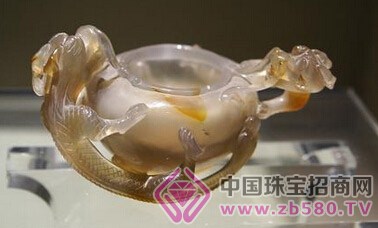Judging from the overall historical development, the jade articles of the Neolithic Age are in the "formation stage." Some of the jade artifacts are light and smooth, and the grinding is delicate. In the relatively long Neolithic era, the techniques were gradually improved, laying the foundation for the “mature period†of jade manufacturing in the Shang and Zhou dynasties. The completion of the Shang Dynasty, more straight, less curved; more thick lines, less thin lines; more negative lines, less Yang. Outside the perforation, the small and small, there is a so-called "horseshoe eye." The "double hook line" on the jade ware of Shang Dynasty (parallel inscribed double lines) is a major achievement in the history of jade crafts. Completed in the Zhou Dynasty, the level of sophistication is more than ever. The lines of the tanning are the same as those of the Shang Dynasty, but the curved lines increase. The technique and shape design of Saitama are constantly improving, and the processing is trimmed and polished to make the utensils more beautiful. In the Spring and Autumn Period and the Warring States Period, the "water sand" (Xie Yusha) began to be selected, and the work was also further developed and shaped, from the opening, the flowering to the glazing. The technique is more detailed and complicated than that of the Shang Dynasty, and its specifications are more rigorous and decent. In the Han Dynasty, the small pieces of jade were finely finished, and the large pieces of jade were rough. Its knife method is simple and powerful, and it is known as "Han Ba ​​Knife" in history. From the Han Dynasty to the Wei, Jin, Southern and Northern Dynasties, in addition to the jade, the stone carvings were also influenced by Buddhism. In the Tang Dynasty, common flowers, sunflower patterns and characters were flying. In particular, the lion beast is more refined, the knife method is not chaotic, the layout is even, thin and heavy, and it has become a major feature of the Tang Dynasty. The outstanding feature of the Song and Yuan Dynasties was that there was no rudeness in absenteeism. At this time, the jade is delicate and dexterous, with many small pieces and few large pieces. The flower and bird category, although not as good as the Tang people, is deeply influenced by the style of Chinese painting at that time, so it attaches great importance to its demeanor. In the Ming Dynasty, the knife method was rough and powerful, and there was a “three-layer open-cut methodâ€. The carving was very fine and had a style of the times. Beijing, Suzhou and Yangzhou at that time were the famous three major jade centers in China. Among them, Suzhou's jade craft is the first in the country. In the middle and late Ming Dynasty, the jade craftsmanship developed faster, and many masters of jade, such as Lu Zigang, Liu Wei, He Si, Li Wenzhao, Wang Xiaoxi, etc., were all masters of sophisticated small pieces. . Among them, Lu Zigang is the most famous, and the jade that he has made is called "Zigang Yu". However, in the last process of the Ming Dynasty, there was a phenomenon of “seeking shape and not seeking workâ€. In the Qing Dynasty, the fine workmanship was subtle and realistic, and there were various tricks such as “handmade†(using smart colors, etc.) and hollowing out and semi-relief. Therefore, a variety of jade pieces with a sense of three-dimensionality emerge in an endless stream. The Qianlong period was the heyday of the jade, and the level of the jade reached its peak. The degree of fine work was far more than that of the Yuan and Ming dynasties. Women Garment,Womens Clothes,Ladies Clothes,Ladies Fashion Clothes Shaoxing Lucas Shoes CO.,LTD , https://www.lucascn.com